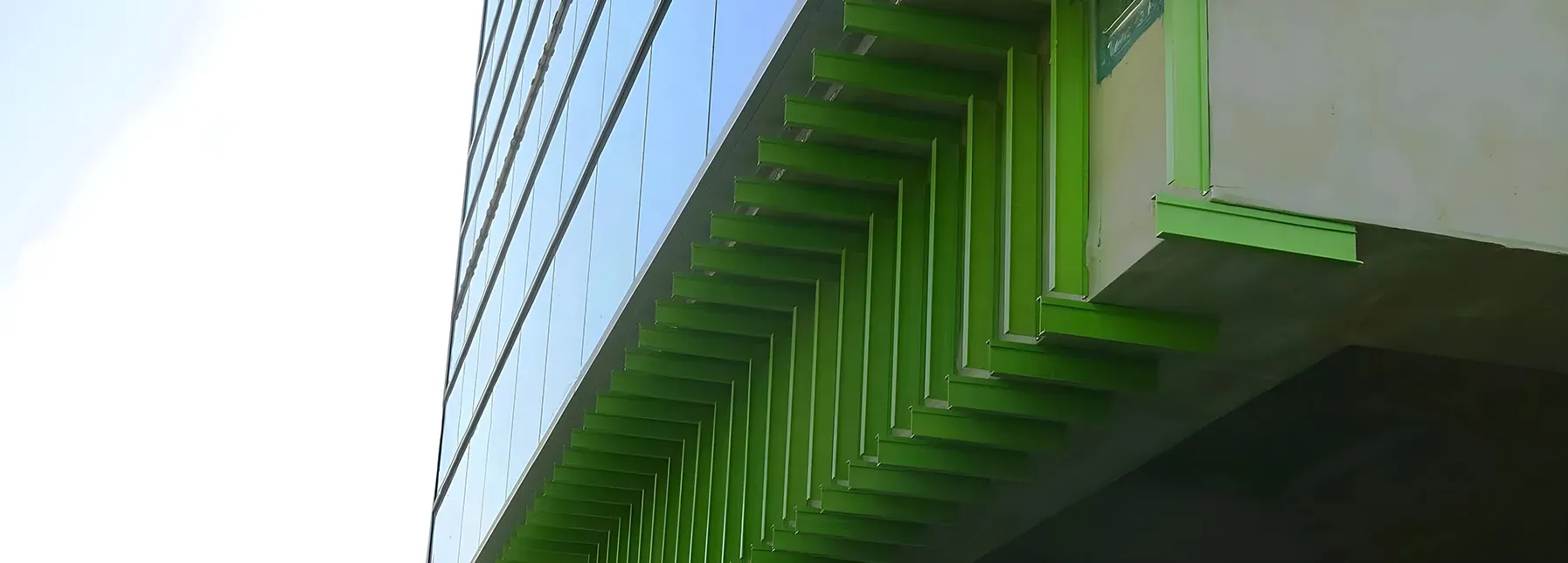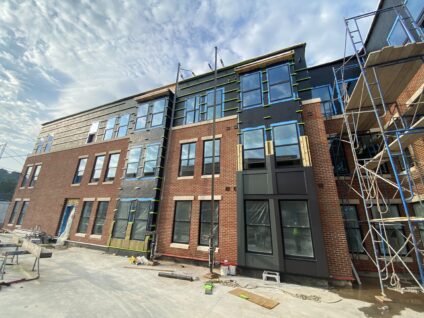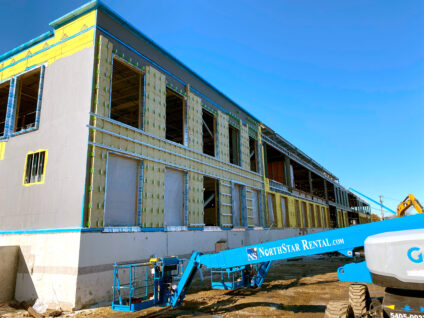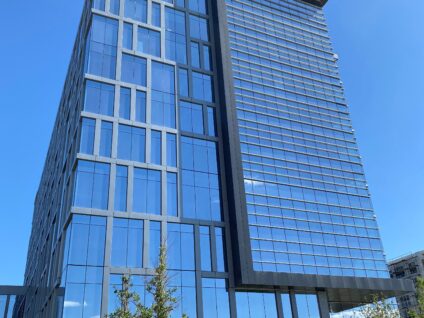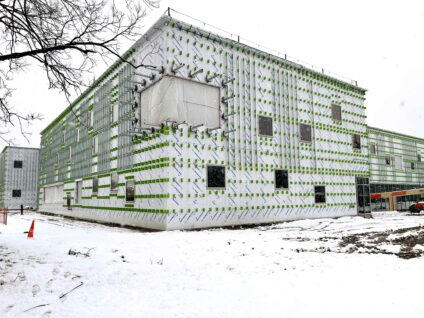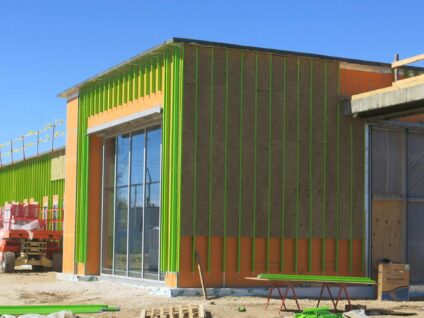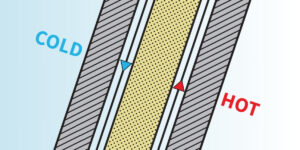Introduction
In modern materials science and engineering, fiber-reinforced polymer (FRP) has emerged as a leading example of advanced composite materials. With their notable mechanical properties, such as high strength-to-weight ratio and excellent corrosion resistance, FRPs have been used in a wide range of applications, from aerospace assemblies to civil infrastructure projects.
However, the complexity of FRPs – stemming from their microstructural composition – introduces specific challenges, especially in the area of fastening. While traditional materials like metals and timber have a long history of research leading to established fastening methodologies, the newer introduction of FRP in engineering requires a more careful approach to fastening.
The need for effective fastening solutions in FRP structures in clear, given their role in ensuring structural integrity, safety, and performance. But the inherent heterogeneity and anisotropy of FRP make screw-fastening more complex, often making conventional techniques less effective.
At the heart of this issue is the interaction between mechanical fasteners, primarily screws, and the composite matrix of FRP. This relationship is influenced by several factors: the design and geometry of the screws, the installation methods used, and the basic mechanical and chemical properties of the FRP.
This article aims to delve into the challenges associated with screw fastening in FRP, shedding light on the underlying mechanisms and suggesting potential improvements in fastening methodologies.
Overview of FRP Usage in Construction and Manufacturing
Fiber-reinforced polymers (FRP) have not always been at the forefront of construction and manufacturing. Their journey began in the mid-20th century when the potential of combining fibers with polymer matrices was first explored. Over the decades, as material science advanced, the unique properties of FRP – such as its resistance to environmental factors – became increasingly attractive for various industries. From the aerospace sector, which valued its lightweight nature, to civil engineering, which appreciated its strength-to-weight ratio, FRP’s adoption grew steadily, marking a transformative shift in how structures and products were designed and built.
Fastening in FRP is not just about joining two pieces together; it’s about ensuring that the composite’s integrity remains uncompromised. Over the years, several fastening methods have been developed and refined for FRP:
- Mechanical Fastening: This involves the use of bolts and rivets. It’s a popular method due to its reversibility, allowing for easy modifications or repairs.
- Adhesive Bonding: Here, adhesives are used to bond FRP components together. This method offers a smooth finish and distributes loads evenly but requires precise surface preparation.
- Hybrid Methods: Combining both mechanical and adhesive techniques, hybrid methods aim to capitalize on the strengths of both approaches.
The choice of the fastening method is crucial. It can influence the overall performance, longevity, and safety of the FRP structure or component. An inappropriate fastening choice can lead to premature failures, reduced load-bearing capacity, or even safety hazards.
Screw Pull-Out in FRP
Screw pull-out in the context of FRP refers to the unintended extraction or dislodgement of a screw from its anchored position within the composite material. In simpler terms, it’s when a screw, which is meant to hold components together, fails to do so and is pulled out from it’s place, either partially or entirely.
Factors Contributing to Screw Pull-Out in FRP:
- Material Properties of FRP: The unique composition of FRP, characterized by its layered fibrous structure embedded within a polymer matrix, can sometimes offer less resistance to screw retention compared to more homogeneous materials like metals. The interface between the fibers and the matrix, as well as the orientation of the fibers, can influence the material’s ability to resist pull-out forces.
- Screw Design and Geometry: Not all screws are created equal. The design, including the thread profile, pitch, and depth, can significantly impact the screw’s holding power in FRP. Screws specifically designed for FRP applications often exhibit better performance than generic ones.
- Installation Techniques: The method and care taken during screw installation play a pivotal role. Factors such as the pre-drilled hole’s size, the torque applied, and the alignment can all influence the likelihood of pull-out. Over-tightening, for instance, can lead to localized stress concentrations, increasing the risk of pull-out.
The phenomenon of screw pull-out in FRP, while seemingly a minor technical hiccup, can have far-reaching implications. At the heart of these implications is the fundamental role of screws: to provide stability and integrity to structures or components. When this role is compromised, the ripple effects can span from the immediate vicinity of the pull-out to the broader structural or operational context. Whether it’s a critical component in an aerospace application or a supporting element in a pedestrian bridge, the failure of a screw can lead to a chain reaction of events, each with its own set of challenges and costs.
Consequences of Screw Pull-Out
- Structural Instability: One of the most immediate and concerning outcomes of screw pull-out is the compromise in structural integrity. Components or sections of a structure can become unstable, leading to a cascading effect of failures in worst-case scenarios.
- Potential for Injury or Damage: With structural instability comes the risk of injury, especially in structures that bear significant loads or are frequented by people. Additionally, equipment or other assets in proximity can also suffer damage.
- Economic Implications: Beyond the immediate repair costs, screw pull-out can lead to operational downtimes, especially in industrial settings. There’s also the potential cost associated with liability issues, should the pull-out lead to accidents or damage to third-party assets.
In light of these challenges and consequences, it becomes evident that understanding and addressing screw pull-out in FRP is not just a technical concern but also a matter of safety and economic prudence.
Screw Creep Rupture in FRP
Screw creep rupture is another critical concern when discussing fastening in FRP. Unlike the immediate nature of pull-out, creep rupture is a gradual process. It refers to the slow and progressive failure of a screw when subjected to sustained loads over extended periods. This phenomenon can be particularly insidious, as the degradation might not be immediately evident until the screw is nearing its failure point or has already failed.
Factors Contributing to Screw Creep Rupture in FRP
The factors leading to screw creep rupture are multifaceted. Continuous loads, even those below the screw’s designated threshold, can induce microscopic changes in the screw’s structure over time. These changes, while subtle, can accumulate, progressively weakening the screw’s hold in the FRP, making it susceptible to failure.
Environmental conditions further complicate the scenario. Fluctuations in temperature can cause both the screw and the FRP to expand and contract, altering the load distribution. Prolonged exposure to moisture, especially if the screw material is prone to corrosion, can intensify the creep process.
Moreover, the inherent nature of FRP, with its durability and unique composition, doesn’t render it immune to the effects of time. The polymer matrix can undergo chemical changes, and the fibers might experience wear, especially at their interface with the matrix. This degradation can alter the FRP’s mechanical properties, further affecting the screw’s ability to maintain its hold.
Consequences of Screw Creep Rupture
The implications of screw creep rupture, while gradual in onset, are profound – the ramifications extend beyond the immediate point of failure. As screws play a pivotal role in maintaining the structure coherence of FRP assemblies, their gradual degradation can silently erode the reliability of the entire system. This latent deterioration is especially concerning because it often goes unnoticed until a critical juncture, making remedial actions more complex and potentially more costly. The interconnected nature of structural components means that the failure of a single screw can set off a domino effect, jeopardizing larger sections or even the entirety of an assembly.
- Loss of Structural Integrity: Similar to pull-out, creep rupture can compromise the stability of the component or structure. The gradual nature of this process means that the degradation can be widespread by the time it’s detected.
- Potential for Catastrophic Failure: The prolonged nature of creep rupture, combined with its often late detection, can result in larger sections of a structure or component failing simultaneously.
- Economic Implications: Repairing or replacing components affected by creep rupture can be costly. If the failure leads to operational downtimes or accidents, the associated costs – both direct and in terms of reputation – can escalate.
In summary, while screw creep rupture in FRP might manifest more slowly than pull-out, its consequences can be equally, if not more, severe. Addressing this challenge requires a holistic approach, encompassing material selection, design considerations, and regular inspections to ensure the continued safety and functionality of FRP structures and components.
Comparative Analysis: Screw Pull-Out and Screw Creep Rupture
In the intricate realm of FRP fastening, the challenges posed by screw pull-out and screw creep rupture are paramount. A deeper technical exploration into these phenomena uncovers a complex interplay of factors, each with its own set of implications for design and mitigation.
Similarities in the Causes and Consequences of Both Phenomena
Both screw pull-out and creep rupture can be fundamentally traced to the micro-mechanical interactions between the screw and the FRP matrix. The interface between the reinforcing fibers and the polymer matrix in FRP is a critical juncture. Weak bonding or micro-voids at this interface can diminish the material’s resistance to both immediate pull-out forces and long-term creep. Furthermore, the manner in which loads are distributed across the screw-FRP interface plays a pivotal role. Uneven load distribution, perhaps due to misalignment or non-uniform material properties, can be a catalyst for both phenomena. Additionally, the thermo-mechanical properties of FRP, which dictate its behavior in response to temperature changes, can impact both pull-out resistance and creep behavior. Especially significant is when temperature cycles cross the glass transition temperature of the polymer matrix. Concurrently, moisture can penetrate the matrix, reducing its inherent stiffness and strength, thereby influencing both pull-out and creep dynamics.
Differences in the Mechanisms and Timeframes of Failure
While both phenomena are influenced by stresses their origins and manifestations differ. Pull-out often arises from localized stress concentrations, particularly around the screw threads. This is a sharp contrast to creep rupture, which emerges from sustained stresses impacting a larger material volume, leading to gradual deformation and eventual failure. Creep, by its nature, is time-dependent, involving the slow movement of polymer chains under consistent load. Pull-out, conversely, can be more abrupt, occurring when the holding force is suddenly exceeded. Over extended periods, cyclic loading and unloading can lead to material fatigue, which is more intrinsically linked with creep rupture than with pull-out.
Implications for Design and Construction Practices
The technical nuances between pull-out and creep rupture have direct implications for design and construction:
- Material Selection: For instance, an FRP with a higher fiber volume fraction can bolster resistance to pull-out due to the enhanced stiffness and strength of the fibers. For long-term creep resistance, the choice of polymer matrix, such as epoxy versus polyester becomes pivotal.
- Screw Geometry: The design of the screw thread is crucial. Deeper threads or those with a pronounced helix angle might offer superior resistance to pull-out. In contrast, screws with a more expansive shank could distribute long-term loads more uniformly, mitigating creep risks.
- Installation Precision: Embracing advanced installation techniques, like torque-controlled screw installation, can ensure consistent and optimal fastening, which in turn reduces both immediate and long-term risks.
In conclusion, while screw pull-out and creep rupture in FRP share some foundational technical similarities, their distinct mechanisms and implications necessitate a nuanced approach. A deep understanding of these technical aspects empowers designers and engineers to develop more resilient, durable, and safe FRP systems.
Overview of Alternative Methods for Fastening in FRP
The increasing recognition of challenges associated with screw fastening in FPR has prompted the industry to delve into alternative fastening methods. These alternatives, each characterized by its distinct attributes, are designed to circumvent the pitfalls of traditional screw fastening while maximizing the inherent advantages of FRP.
- Adhesive Bonding: Adhesive bonding stands out as a method that offers a seamless integration of components. One of its primary advantages is the provision of a smooth finish, eliminating the need for perforations that could introduce potential stress concentrations. This method ensures that loads are distributed evenly across the bonded area, minimizing localized stresses. Moreover, adhesive bonding offers the flexibility to bond dissimilar materials, paving the way for innovative design possibilities. However, it’s not without its challenges. Achieving a robust bond mandates meticulous surface preparation, and once bonded, the components become challenging to disassemble or repair. Additionally, the curing times for some adhesives can be prolonged, potentially extending production cycles.
- Bolted and Riveted Joints: Bolted and riveted joints have a storied history in construction and manufacturing, making them a tried-and-true method. Their primary advantage lies in their reversibility, allowing for easier disassembly and reassembly, which is particularly beneficial during repairs or modifications. However, the very nature of this method, which involves introducing holes into the FRP, can inadvertently create stress concentration points. There’s also the looming risk of galvanic corrosion, especially if dissimilar metals are used in close proximity.
- Hybrid Methods: Marrying the strength of adhesive bonding with the reliability of mechanical fastening, hybrid methods have emerged as a compelling alternative. By distributing loads across an expansive area, these methods significantly reduce the risk of localized failures. The combination ensures a robust connection while retaining some degree of reversibility. However, the complexity in the design and installation processes can be a deterrent for some applications. Additionally, ensuring compatibility between adhesives and mechanical fasteners becomes paramount.
Conclusion
From immediate concerns of screw pull-out to the more insidious, long-term threats posed by screw creep rupture, it’s evident that traditional screw fastening in FRP is fraught with complexities. As FRP continues to gain traction in various industries, from aerospace to civil infrastructure, ensuring the safety and longevity of these structures becomes paramount. It’s not just about harnessing FRP’s lightweight and high-strength properties but ensuring that these materials are integrated and fastened in a manner that stands the test of time.
In essence, the journey of understanding and addressing the challenges of screw fastening in FRP is a testament to the industry’s commitment to innovation and safety. As designers, engineers, and stakeholders, it’s incumbent upon us to delve deep into these challenges, explore alternative methods, and implement solutions that ensure the continued reliability and performance of FRP structures. Only through such informed and proactive approaches can we truly unlock the full potential of Fiber-reinforced polymers (FRPs).
GreenGirt® Composite Metal Hybrid (CMH™)

GreenGirt CMH represents a significant advancement over traditional FRP materials, offering a unique blend of an FRP Z-profile with steel inserts in each flange. This hybrid design was meticulously engineered to achieve maximum structural integrity and fastener retention, addressing the limitations often associated with standalone FRP. While FRP offers excellent corrosion resistance and thermal performance, it can lack the structural strength required for certain applications. By integrating steel inserts into the FRP Z-profile, GreenGirt CMH provides a robust solution that combines the best of both materials. The result is a composite material that is superior to steel in terms of thermal performance and matches its loading capabilities, effectively eliminating issues like fastener pull-out and creep rupture.
To learn more about GreenGirt CMH sub-framing and its structural capabilities, visit our website or contact us today!
© 2023 Advanced Architectural Products

